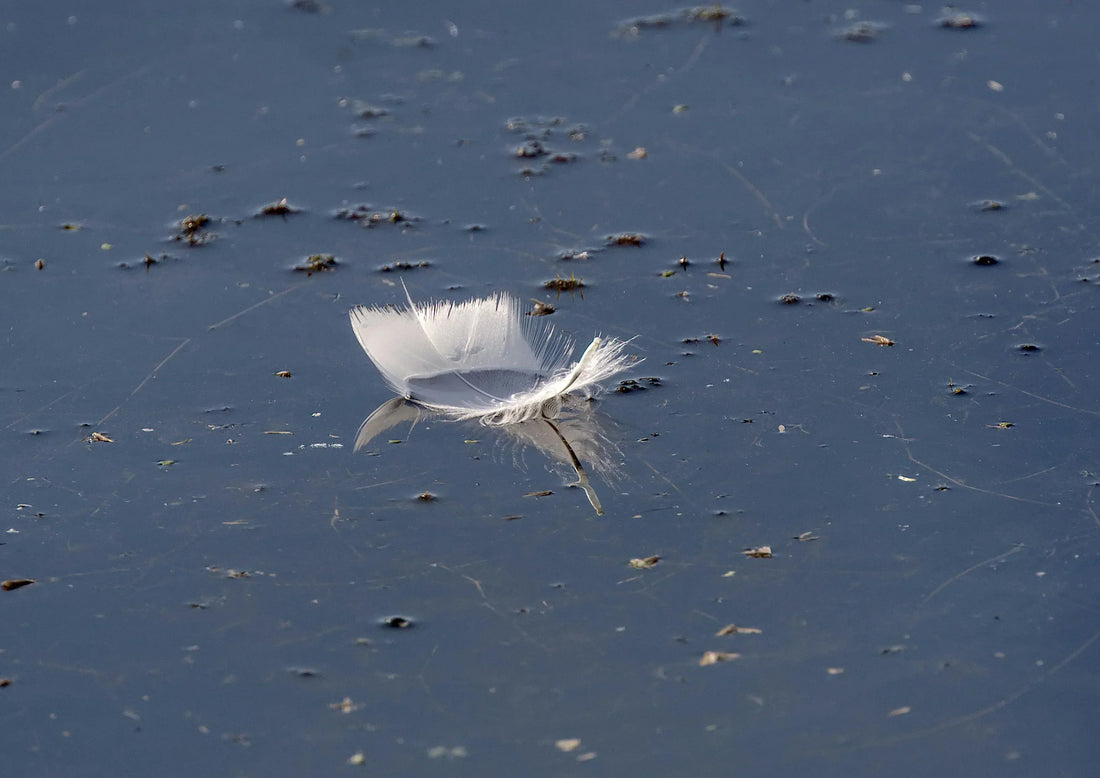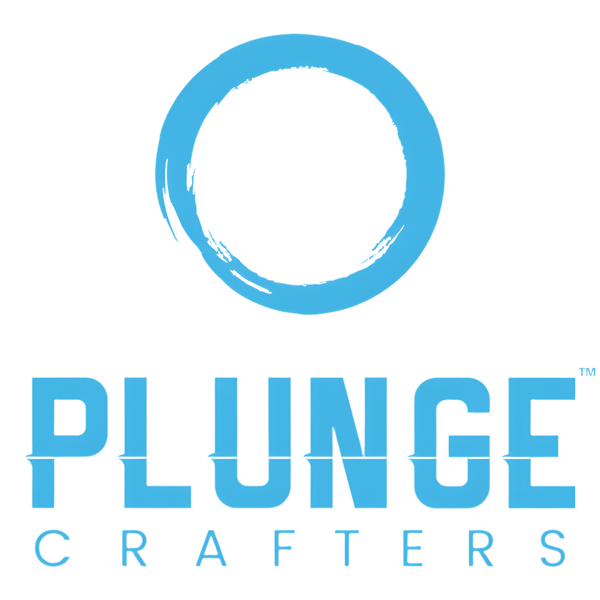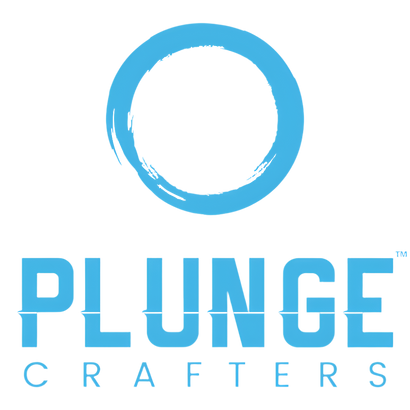How to Keep Cold Plunge Water Clean: Easy Maintenance Tips

A cold plunge should feel refreshing, not questionable. If you’ve invested time and energy into setting up your own tub the last thing you want is cloudy water, unpleasant odors or equipment that wears out too quickly. Learning how to keep cold plunge water clean is just as essential as the plunge itself. Clean water ensures your tub is safe, hygienic and built to last.
At Plunge Crafters we specialize in premium cold plunges and helping DIY enthusiasts to design and build their own luxury plunge setups that are durable, effective and easy to maintain. Whether you’re a high-performing athlete or a busy professional looking to optimize recovery, our DIY kits make it simple to bring cold therapy home. Explore our products today and take control of your cold plunge experience.

Why Keeping Cold Plunge Water Clean Matters
Neglecting your water quickly leads to issues you can’t ignore. Even though cold temperatures slow bacteria, they don’t eliminate it. Stagnant water can quickly become a breeding ground for microorganisms that cause cloudy water, slimy walls and foul smells. If left unchecked this creates a risk for skin irritation or illness especially if multiple people use the plunge. This is because cold water temperatures can actually lower disinfectant effectiveness.
Dirty water also shortens the lifespan of your setup. Pumps and chillers strain harder when clogged with debris or scale buildup. A cold plunge filter is only as effective as the water it circulates. Keeping water clean not only protects your health but also ensures your equipment runs efficiently for years. At Plunge Crafters our kits are built for durability but consistent care is what makes them thrive long term.
How to Keep Cold Plunge Water Clean DIY
DIY cold plungers often assume that cold water is self-cleaning. The truth is, knowing how to keep cold plunge water clean for a DIYer comes down to simple but consistent steps. You don’t need an expensive spa setup to achieve crystal-clear water.
Household options like white vinegar for wiping down surfaces or food-grade hydrogen peroxide for sanitizing are cost-effective and easy to use. For those who prefer a more traditional route, spa-grade bromine or chlorine can also work in small measured doses. The key is to avoid overdoing it. Small tubs concentrate chemicals quickly so test strips are essential.
This is where DIY setups shine. With Plunge Crafters, our kits allow you to start with a simple setup and later upgrade with filtration or sanitation add-ons as your needs grow. It keeps costs low while still maintaining a safe and clean plunge.

Key Steps To Cleaning Cold Plunge Water
Filtration Essentials For Cold Plunge Tubs
Filtration is the backbone of water care. A good filter removes oils, skin cells and debris before they have the chance to cloud your water. Options for cold plunges include cartridge filters, sponge-style filters and sand filters for larger systems.
For most home plunges cartridges are the simplest to maintain. A quick rinse every week and a deeper clean every 2-3 weeks keeps them working effectively. Our team recommends monthly replacements, ensuring your cold plunge tub works as effectively as possible. Filters that are neglected quickly clog making circulation less effective and creating cloudy water. Investing in a strong cold plunge filter is one of the best ways to reduce water changes and keep your routine simple.
Sanitizing Options: Chlorine, Bromine, Hydrogen Peroxide
Sanitizers handle what filters can’t. Chlorine is a familiar option but it can feel harsh on skin and has a strong smell. Bromine is more stable in cold water, works well for sensitive skin and requires less frequent top-ups. Food-grade hydrogen peroxide has become popular with the DIY crowd because it breaks down into oxygen and water leaving no residue.
The key with any sanitizer is dosage. In a 100-gallon plunge just a small amount makes a big difference. Always test before adding more. Too much sanitizer is just as problematic as too little. For those new to cleaning cold plunge water start with small doses and gradually build a rhythm for your tub’s needs.
Both of these options can work great for cleaning water but they do require more upkeep compared to the automated convenience of ozone.
Cold Plunge Ozone Generator And UV Light Systems
For those who want to reduce chemical use technology helps. A cold plunge ozone generator injects ozone into the water, destroying bacteria and neutralizing contaminants. It’s the most effective non-chemical sanitation method available, providing hands-free operation and consistent protection.
By connecting it to a timer and running it for two hours twice a day while the tub isn’t in use, you can dramatically extend the time between water changes. Paired with a sediment filter, this routine can stretch intervals from every two weeks to as long as 2–3 months.
UV light systems can also provide an extra safeguard by disrupting microorganism DNA so they can’t reproduce. However, they are not as effective as ozone. Both options can work well alongside standard filtration and light sanitizer use.
These upgrades are especially appealing to biohackers or anyone sensitive to chlorine or bromine, delivering cleaner water with less irritation. Plunge Crafters kits are designed to accommodate ozone and UV systems, giving DIYers the flexibility to upgrade as their needs evolve.
To dive deeper, read: How to Keep Your Cold Plunge Water Sanitary with Ozone.

How To Keep Cold Plunge Tub Water Clean Daily & Weekly
Showering And Pre-Plunge Prep
The easiest way to reduce contamination is to keep it out in the first place. A quick shower before plunging removes oils, sweat and lotions. Even wiping down your feet helps. For households where multiple people use the plunge this step makes a massive difference in extending water life.
Skimming And Covering Your Tub
A simple hand skimmer removes floating debris in seconds. Pair this with a cover and you’ll prevent dust, pollen and insects from sneaking into the water. For outdoor plunges, our insulated stock tank covers are essential to protect against UV light that can degrade sanitizers.
Quick Filter And Surface Wipe Downs
Wiping down the tub walls weekly with a vinegar and water solution keeps biofilm from building up. It only takes a few minutes but prevents slime and odor. Rinsing your filter weekly also keeps circulation efficient. This simple routine is the best answer to how to keep cold plunge tub water clean consistently. (Note: This step is not necessary when running ozone).
How Often Should You Change And Refill Cold Plunge Water
Frequency depends on usage and setup. A single user in an indoor plunge can often stretch water changes to every 2-3 weeks. Outdoor plunges or tubs shared by multiple users may need refills every 1-2 weeks. Even with great care no water lasts forever. However, using ozone can provide the best and longest lasting results.
Signs it’s time: cloudy water, odors or slippery tub walls. For those with advanced systems like ozone or filtration water changes can be extended but routine refills keep everything balanced. DIY plungers should expect more frequent changes early on while they learn their system’s rhythm.
Troubleshooting Common Cold Plunge Water Problems
Cloudy Or Murky Water
Cloudiness comes from suspended particles, poor filtration or an imbalance in pH. The first step is to clean the filter and test the water. Adding a shock treatment like non-chlorine shock or extra hydrogen peroxide often clears it quickly. If you are using ozone, simply increase how long the ozone generator is running.
Foamy Surfaces And Scum Rings
Foam usually comes from body oils, lotions or soaps. The fix: let a scum absorber float in the tub to absorb oils and remind users to shower before entering. For persistent issues drain and refill. These issues are common for beginners learning how to keep water clean in cold plunge tubs.
Strange Odors And Skin Irritation
Odors mean bacteria are growing or sanitizer levels have dropped. Skin irritation usually points to pH that’s too high or too low. Both problems can be solved by testing water chemistry and balancing levels. If issues persist a complete drain and refill resets the system. For additional expert tips, you can always contact us for additional assistance and we’d be happy to help.

Shop DIY Cold Plunge Kits With Plunge Crafters
At Plunge Crafters we make it easy for you when learning how to keep cold plunge water clean. We offer step-by-set DIY cold plunge build guides to help you with every process of cold plunging from start to finish. You can also upgrade your cold plunge with our Ozone Bundle or Cold Plunge Filter.
Maintaining clean water doesn’t have to be complicated. With the right habits and tools your plunge can stay safe and refreshing year-round. At Plunge Crafters we have all that you need and more to build your ideal recovery setup. Shop our Ready-to-Plunge tubs or DIY Cold Plunge Kits today!

